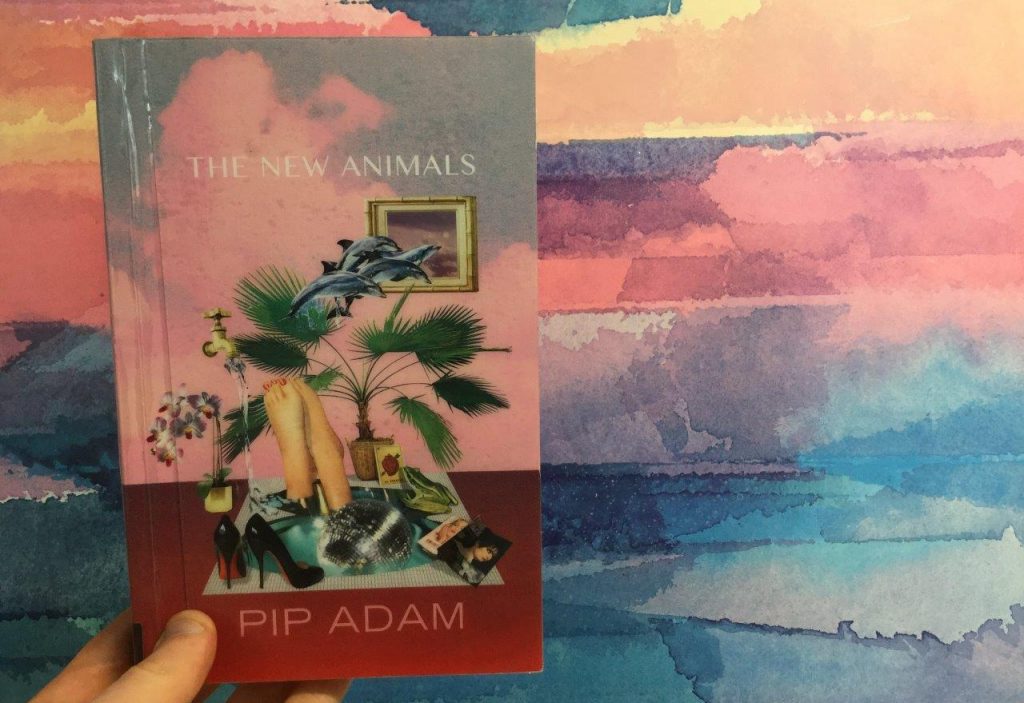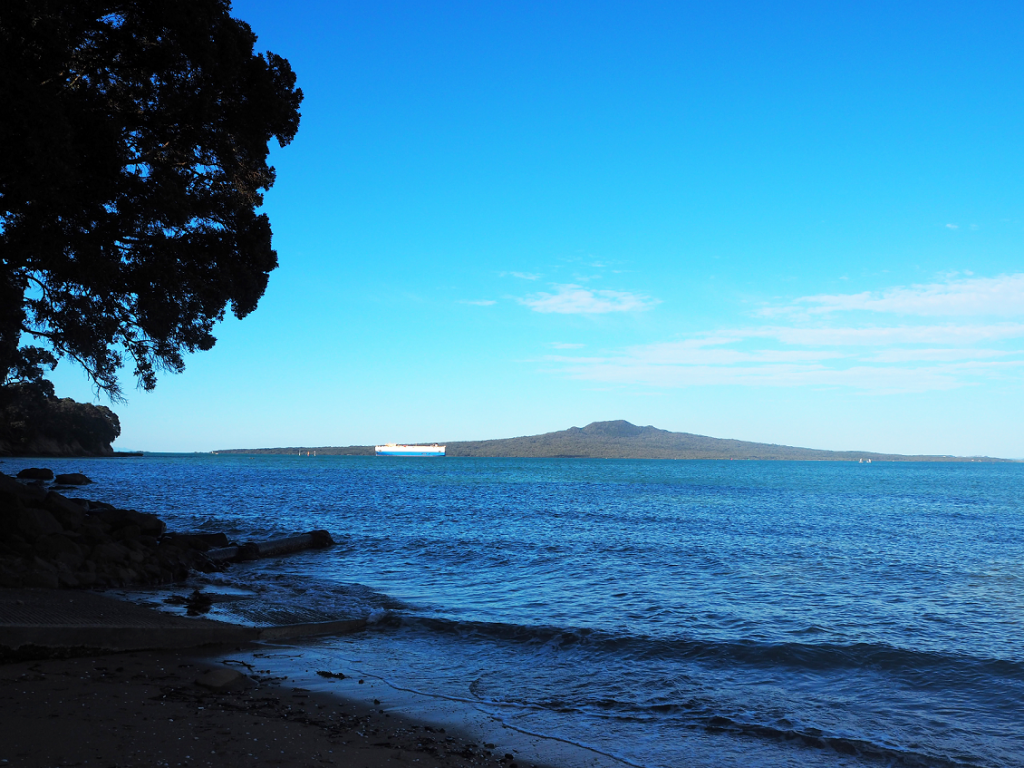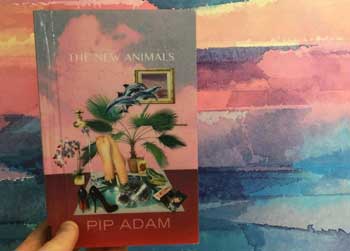
Spacious open plan living. Nest or invest. Classy urban retreat. If you’ve spent a bit of time browsing real estate brochures, you’ve probably read these words before. But there’s another, darker story of renting and home ownership in New Zealand, one without floor plans or glossy full-page photos: The New Animals, by Pip Adam.
Adam’s work has appeared in a range of journals and anthologies, with her short story collection Everything We Hoped For published in 2010 and her debut novel I’m Working on a Building in 2013. She’s been described as “the woman who is making literature subversive fun in this country again… The most wired-in to the seething discontent below the housing bubble.” So put down the brochure and get a copy of The New Animals today!
The blurb for The New Animals references intergenerational tension, however the story also looks at tensions of class, wealth and gender. What was it like shaping a story around these conflicts?
I always think conflict and complexity give ‘life’ to stories. It seems like a boringly obvious thing to say but it is also constantly a surprise to me. I often use writing to sort out things that confuse me about life and I guess confusion is often a state of conflict for me – one idea against another, or maybe things acting in ways that don’t gel with my world view that cause a disruption to the things I believe and understand. For me it is always scary writing about people who I am not, but I have always loved the idea of trying to imagine myself into a mindset that seems confusing to me. Like often I might see someone do something and I have this idea that people always act in ways they see as ‘good’ or ‘right’. I’ve met lots of people and no one ever seems to make decisions by thinking ‘this is wrong thing to do’, even people who have broken the law. So yeah, I am always interested in trying to imagine myself into a mindset that would see decisions I see as odd as the ‘right’ decision. I enjoyed it particularly in this work because it was a bit like Sudoko or those tile puzzles, where someone would act and there would be a domino tumble of other people being forced to act.
 You recently talked about your relationship with fashion – its power and ability to answer societal questions, but also its environmental impact. How did you approach this in The New Animals, especially with fashion playing such a large role in the story?
You recently talked about your relationship with fashion – its power and ability to answer societal questions, but also its environmental impact. How did you approach this in The New Animals, especially with fashion playing such a large role in the story?
I am really interested in design of all types, particularly the form and function, or form versus function. Before I started the book I had this love of fashion which I think was a hangover from my hairdressing days. Like I loved seeing how fashion changed and yeah, also I really like looking at beautiful things. For this book I started taking a more intense interest. I became a rampant follower of fashionable people and people in the fashion industry. I just consumed everything I could. I visited shops as well, touched the clothes, saw them on the hangar and on people. I was also really interested in the history of fashion and some of the theories around fashion. I am especially obsessed with the work of Rei Kawakubo and the way she deconstructs the human form. I love the play of her work but also the real seriousness and almost horror of some of her work. I am also quite obsessed with Alexander McQueen’s life and work – in a lot of cases the violence of it. One of the hard things about writing about fashion is that it is often talked about in quite ‘light’ ways. I had to read very deeply to find the language that had weight and importance. There is a risk that fashion can seem shallow because, I think, it is ephemeral and seems to be about adornment when often it is about so much more.
The New Animals is very grounded in Auckland. How do you think the city’s geography helped with the story?
I really love Auckland. I grew up there and I visit a lot. It’s interesting you ask about geography because I think it is a really interesting city that way. Like you have that massive volcanic basin that is the harbour and then you have that network of volcanoes that have formed Mt Wellington and Mt Eden and, yeah, I often think of Auckland as this volatile place. My parents live close to Stonefields which is a development built on the site of an old quarry. Auckland has this feeling for me of land acted on. Land in flux, land in change and to me this book is a lot about that, about change and fluidity and evolution and I think walking around Auckland, travelling over it which I did heaps of for this book it’s impossible not to feel that. For instance, the train I catch a lot from Glen Innes travels over the Orakei Basin, this incredibly changeable place. If the tide is in, it looks like a body of water, but when the tide is out it transforms into this muddy almost wasteland. Everything that was covered by the water is exposed. I like that as an image as well, the way things can be exposed by changes in environment. Tides are a big part of my thinking around this book. The way the moon pulls these huge bodies of water around, the way they kind of create these weather patterns deep below us. And then don’t even get me started about how humans began as fish, how the ocean must have some strange pull on us still.
 One aspect that really stood out was the friendship between Carla and Duey, with the contrast between their interactions and their personal thoughts, and their awareness of the friendship’s decline. Was this relationship a difficult one to write?
One aspect that really stood out was the friendship between Carla and Duey, with the contrast between their interactions and their personal thoughts, and their awareness of the friendship’s decline. Was this relationship a difficult one to write?
For a long time, in the writing process, Carla and Duey had been lovers and it just wasn’t doing what I wanted it to do. We so often place the ‘sex’ relation above all other intimate relationships. I am really interested in friendship. I find it so interesting. What keeps friendships alive is so complicated but also so purely unselfish. I liked the idea that Carla and Duey were at a stage where the relationship (as if it were a separate thing from the two people in it) was in decline, like despite all their care and thought for each other nothing was going to save it. It was difficult to write because I don’t read many books about friendships that are like that, so in a way the models I had were very much about love and sex relationships. So it took some sorting out, like some real close work. The other thing that I loved about writing that relationship is that I think it is pretty cool how humans can think one thing and then act in a better way. I love how we do that for each other. I guess also, finally, I was interested in deconstructing some of the ‘work’ we do in human relationships. Like, I find people pretty confusing sometimes, a lot of the relating stuff doesn’t come automatically to me. So, I am often thinking a lot about what the right thing to say is or what a person is saying (like actually saying). It was fun to make some of that work apparent, to sort of uncover that and show it.
Reviews of The New Animals have generated some discussion about New Zealand literature and the reviewing process. What has it been like seeing the passion your work has brought out in people?
Writing is a weird thing. I really like the part of writing that takes place in a room by myself. I love working on something, like really working on something – crafting it and messing it up and having to fix it and living with it. I find I get so ‘into’ that work (like I literally feel like I climb inside the story) that I forget that other people will read it. So yeah, sometimes publication is a bit of a shock. Like I remember after my first book was published someone I didn’t know said to me, ‘I read your book,’ and I was like, ‘I never said you could.’ I just forget that people will read it. So, it’s pretty amazing when people I respect say they like what I’ve written. People will email me and tell me in person and it means heaps because I’ve sort of ‘shown my hand’ as a human. I’ve said, ‘I made this. I think this is how life is awesome,’ and when someone says, ‘I see what you’ve made and it made me think this is how I think life is awesome,’ that is just incredible. I love how art can do that and I’m not sure much else can. I put a lot of stake in passion. I love the way, in my life, I have been granted the opportunity to come into contact with many people who make me feel passionate and I just get fired up about the idea that our work sort of sparks off each other. Like no matter what is going on. No matter what other people are saying about our work, we can sustain ourselves. It’s like the biggest collaboration. Because although I love those times by myself working, I am never far from the work of others, I will be reading those writers to keep me going, to keep me passionate.


